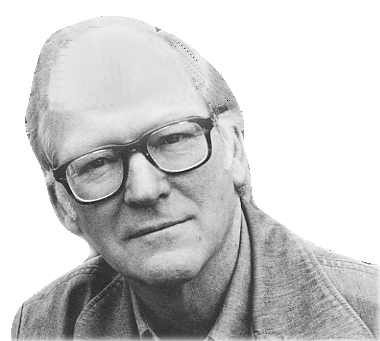Click here and press the right key for the next slide (or swipe left)
also ...
Press the left key to go backwards (or swipe right)
Press n to toggle whether notes are shown (or add '?notes' to the url before the #)
Press m or double tap to slide thumbnails (menu)
Press ? at any time to show the keyboard shortcuts

Recall Russell’s Theory of Descriptions ...

Which words (and phrases) refer?
Distinction: communicating about vs referring
‘Ayesha is eating lunch’
‘Someone is eating lunch’
‘Ayesha is fluffy’
‘The smelliest cat in my house is fluffy’
‘we may put, in place of “the smelliest cat in my house,” the following: “One and only one entity is the smelliest cat in my house, and that cat is fluffy”’
Russell, 1905 p. 488
Three applications
Analysis of definite descriptions
Analysis of proper names (they are usually really disguised descriptions)
Distinguishing knowledge by description from knowledge by acquaintance
‘The critical question is whether the sentences in which [phrases of the form ‘the so-and-so’] appear are quantificational or referential, and Russell may well be right about the critical cases here.
That is, many apparently referential constructions may in fact be quantificational.’
Ludlow, 2004
Donnellan’s objection
“Suppose one is at a party and, seeing an interesting-looking person holding a Martini glass, one asks, “Who is the man drinking a Martini?” If it should turn out that there is only water in the glass, one has nevertheless asked a question about a particular person, a question that it is possible for someone to answer”
(Donnellan 1966: 287).
The argument from misdescription (Donnellan’s?)
If ‘the man drinking a Martini’ were quantificational, then the question would not be about anyone at all.
In that case it would be puzzling how the question can be answered.
But the question is easy to answer.
So the ‘the man drinking a Martini’ can’t be quantificational.
It must be referential.
Which words (and phrases) refer?
Russell: Utterances of phrases of the form ‘the man drinking Martini’ are always quantificational.
Donnellan: Utterances of phrases of the form ‘the man drinking Martini’ are sometimes referential.
Distinction: utterances of ‘the man drinking Martini’ can be ...
referential
[‘Who is the man drinking Martini?’]
attributive
[‘I have no idea who it is, but one man here is drinking Martini. Whoever he is, I want the man drinking Martini thrown out of this party.’]
“I will call the two uses of definite descriptions I have in mind the attributive use and the referential use.
A speaker who uses a definite description attributively in an assertion states something about whoever or whatever is the so-and-so.
A speaker who uses a definite description referentially in an assertion, on the other hand, uses the description to enable his audience to pick out whom or what he is talking about and states something about that person or thing”
Donnellan, 1966 p. 285
‘The man drinking Martini is wearing a hat.’
‘No he isn’t, and he is not drinking Martini.’
Which words (and phrases) refer?
Russell: Utterances of phrases of the form ‘the man drinking Martini’ are always quantificational.
Donnellan: Utterances of phrases of the form ‘the man drinking Martini’ are sometimes referential.
Who is right, Russell or Donnellan?

Pragmatic Aspects
A Simple Picture
1. There is a sentence, e.g. ‘I have had breakfast’,
2. which you utter in a context, and
3. the sentence plus the context fixes what the words refer to in accordance with codifiable rules.
E.g. ‘I’ refers to the utterer.
‘I have had the oil changed’
‘I have had a kidney removed’
‘I have had fermented fish for breakfast’
[on leaving a party] ‘I have had great evening. This wasn’t it.’ (Groucho Marx)
If we accept the Simple Picture,
then what utterances communicate goes beyond
what any words and phrases refer to.
Jack and Jill went up the hill [together].
Beatrice has always been a great lecturer [since she’s been a lecturer, not since she was born].
Sigrid took out her key and opened the door [with her key].
Harold went to the edge of the pool and jumped [into the pool].
Carston, 2002 p. 22
Carston, 2002 p. 22
This is a pervasive feature of communication by language.
If we accept the Simple Picture,
then what utterances communicate goes beyond
what any words and phrases refer to.
MS, the meaning of the sentence;
PE, the proposition expressed; and
PM, the proposition meant.
Neale, 1990 p. 75
‘I have had breakfast’
fact to be explained
Ayesha utters ‘Earth is being warmed by human activity.’
Beatrice utters ‘Mars is being warmed by human activity.’
ftbe: Those utterances differ in that one is made true by how things are with Earth whereas the other is made true by how things are with Mars.
attempted explanation
‘Earth’ refers to Earth whereas ‘Mars’ refers to Mars.
What (if anything) is reference?
What could justify holding that
words, phrases or sentences
have meanings?
MS, the meaning of the sentence;
PE, the proposition expressed; and
PM, the proposition meant.
Neale, 1990 p. 75
‘There is milk in the fridge.’
‘There is mould in the fridge.’
‘There are nuts in the fridge.’
A Simple Picture
1. There is a sentence, e.g. ‘There is milk in the fridge’,
2. which you utter in a context, and
3. the sentence plus the context fixes what the words refer to in accordance with codifiable rules.

Pragmatics vs Donnellan
Which words (and phrases) refer?
Russell: Utterances of phrases of the form ‘the man drinking Martini’ are always quantificational.
Donnellan: Utterances of phrases of the form ‘the man drinking Martini’ are sometimes referential.
‘The man drinking Martini is wearing a hat.’
‘No he isn’t, and he is not drinking Martini.’
An alternative to Donnellan’s view:
The PE is ‘There is one and only one man drinking Martini, and he is wearing a hat’.
The PM is a proposition about that man (who isn’t actually drinking Martini).
“The Russellian and the ambiguity theorist [i.e. Donnellan] agree that when a description is used referentially, (one of) the proposition(s) meant is object-dependent;
they just provide different explanations of this fact.
The referentialist complicates the semantics of ‘the’; [i.e. explains it by appeal to PE]
the Russellian appeals to antecedently motivated principles governing the nature of rational discourse and ordinary inference [i.e. explains it by appeal to PM].”
Neale, 1990 p. 90

conclusion
- There may a distinction between MS, PE and PM.
- In evaulating objections to Russell’s theory of descriptions, we should to take this three-fold distinction into account.
- To better understand communication with words, we probably need to look more deeply at the distinction between MS, PE and PM.

The Meaning of a Sentence, the Proposition Expressed and the Proposition Meant
MS, the meaning of the sentence;
PE, the proposition expressed; and
PM, the proposition meant.
Neale, 1990 p. 75
What are the meanings of sentences?
Why suppose that sentences have meanings?
facts to be explained
If someone utters a sentence and you understand her, then you will likely understand others when they utter that sentence. And conversely.
If a sentence is used to communicate something in one situation, then it can typically be used to communicate much the same thing in another situation.
attempted explanation
There are some things and nearly every sentence is related to a different thing.
Communicators often know which thing is related to which sentence.
This knowledge (is part of what) enables them to understand utterances of those sentences.
termiology
Call these things ‘meanings’.
What (if anything) are these meaning things?
And what is this relation between the meanings and the sentences?
The meaning of a sentence is a function from contexts of utterance to propositions.
Ex: Take ‘I have had breakfast’ and a context of utterance in which Ayesha utters it. The meaning of this sentence takes this context of utterance to the proposition that Ayesha had breakfast.

‘entities such as meanings ...
are not of independent interest’
Davidson, 1974 p. 154
MS, the meaning of the sentence;
PE, the proposition expressed; and
PM, the proposition meant.
Neale, 1990 p. 75



facts to be explained
[Systematicity] ‘there are definite and predictable patterns among the sentences [utterances of which] we understand’(Szabó, 2004).
[Productivity] communicators can understand utterances of an indefinitely large range of sentences we have never heard before.
attempted explanation
Words have meanings (which are their senses).
[Compositionality] The meaning of a sentence (and of any complex expression) is fully determined by its structure and the meanings of its constituent words.

I have had breakfast.
I have had a kidney removed.
I have had fermented fish for breakfast.
I have had a great evening.
Among utterances of these sentences,
there can be is variation in the PM
although Compositionality does not permit corresponding variation in MS.
Given that MS is a function from contexts of utterance to propositions,
the values of this function will not typically be a PM.
Terminology: Call the value of MS in a given context of utterance the ‘proposition expressed (PE)’.
MS + context of utterance ---yields---> PE
MS, the meaning of the sentence;
PE, the proposition expressed; and
PM, the proposition meant.
Neale, 1990 p. 75
What is the relation between PE and PM?
MS + context of utterance ---yields---> PE
PE + ??? ---yields---> PM
“The Gracehoper was always jigging ajog, hoppy on akkant of his joyicity”
Joyce, Finnegans Wake 408.22